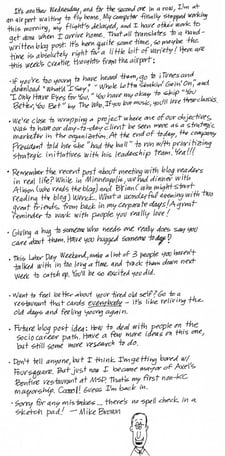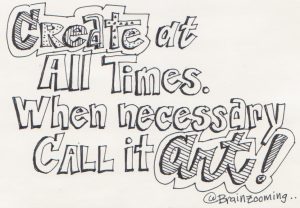Joe Pine of Strategic Horizons opened the Business Marketing Association conference’s second day covering the fundamental economic shift resulting in “placemaking,” the concept (and actual implementation) of businesses using venues and events to create experiences. These experiences are becoming the predominant economic offering. Here are three key themes from his incredibly content-rich presentation: authenticity, place, and new variables.
Authenticity
According to Pine, “With every economic change, there’s a change in consumer sensibilities.” After explaining the move from a service to an experience economy, Pine highlighted authenticity as the new consumer sensibility, i.e. the criteria by which people are choosing what they buy. Being authentic ties to three rules:
1. If you’re authentic, you don't have to say it.
2. If you say you’re authentic, you better be.
3. It’s easier to be authentic if you DON’T say you are.
Authenticity doesn’t come through a claim; it comes through “rendering” it within your organization and for your customers. It’s ultimately gauged by how true your offer is to itself and whether what your offer is what it says it is. Creating authenticity across thousands of customer interactions has to stem from imparting the brand within your employee base first.
Place
Companies that really get the criticality of experience are effectively using place as a staging ground for events allowing prospects and customers to experience a brand in ways that make then want to pay attention. Pine offered several examples of businesses doing this very well:
- ING Direct designed cafes to create a banking experience. All employees in the cafes are both trained baristas and financial professionals, playing a dual customer service role as they engage prospects. Its several locations have created $1 billion in new accounts since introduction.
- Johnson Controls has an experience center to simulate power outages and allow b2b buyers to experience the impact of its products in these very real situations.
- Case Construction has a huge "sandbox" to “play” with its construction equipment.
- The US Army employs the concept online with its America’s Army website. It has games that engage potential recruits online. As they succeed at missions within the game, they qualify as recruits.
New Variables in Creating Experiences
Within experiences, efficacy metrics become much richer than those for more traditional marketing approaches. The reason? Variables at the marketer’s disposal to engage prospects and customers go beyond trying to reach the maximum number of people with an ad.
Experience efficacy is measured as:
(The impact of number of people x Duration of experience x Degree of attention x Intensity of experience x Memorability) divided by the Cost of the Experience.
An additional experience marketing element that impacts ROI comes from prospect and customer willingness to pay for experiences even before buying a product or service. Examples offered included:
- The American Girl Place with its in-store events
- Harvard Business School Conferences create interest in book sales of presenting authors
- Starizon – Charges $10,000 for potential customers to visit and experience its location where it used its innovation approaches for the design.
The impact of this is the denominator in the Experience ROI equation offsets costs with admission fees. As a result, ROI could actually become infinite as a denominator goes to zero. In keeping with the conference theme, the challenge for marketers of all types is to unlearn the traditional approaches that have worked in a service economy, and be able to embrace new realities where experiences are the source of the value being created today. – Mike Brown



